There is no correlation between firearm-related deaths (including homicide, suicide, unintentional, and law enforcement) and gun lobbying (for or against gun control). Essentially, feel-good legislation is ineffective but quite profitable.
The debate over gun control is heavily influenced by various groups, including the anti-gun lobby and anti-Second Amendment (2A) politicians. These groups often dominate headlines and social media, advocating for more restrictive gun laws. Organizations like Moms Demand Action, Everytown, and Newtown have successfully garnered public support by using data, statistics, and emotional appeals to sway opinions.
However, the perspective supporting the Second Amendment, which views it as a vital measure for self-defense, is often underrepresented. This viewpoint is frequently criticized as prioritizing firearms over children’s safety or merely offering “thoughts and prayers.” Despite these criticisms, proponents of the 2A argue that compromising on these rights poses greater dangers.
Key Points:
- Implementing mandatory gun buybacks or registrations in the U.S. would cost billions of taxpayer dollars, and many firearms would still remain in civilian hands.
- The firearm industry contributes billions annually to the U.S. economy, providing jobs and tax revenue.
- Despite existing gun control laws, homicide rates in countries like the U.S., Canada, Australia, and the U.K. continue to fluctuate, suggesting that criminality is not directly impacted by these laws.
- The Second Amendment and Supreme Court rulings support an individual’s right to keep and bear arms in the U.S.
- Gun control has historically been used to oppress minorities in the U.S. and worldwide.
- There is no positive correlation between gun lobby efforts, anti-gun lobby actions, and gun deaths.
The Economic Impact of Gun Control
Groups like Everytown estimate that gun violence costs $557 billion per year. (Source 4) However, this figure includes extreme estimates of lost wages, court costs, incarceration, medical bills, etc., and the source of this data is often unclear.
The Cost of Gun Control
Canada imposed gun registrations costing over $2.7 billion (adjusted to $3.32 billion today), which failed and records were destroyed. (Source 1)
Australia’s gun buyback program in the 1990s cost $230 million; the country now has more guns than before. (Source 2)
The UK’s gun buyback program cost $2 million to collect only 162,000 firearms, covering a small fraction of the total guns. (Source 2) More than $3.2 million today, and the country has only recovered 26% of its firearms.
In the U.S., implementing similar measures would be significantly more expensive and complex due to the high number of firearms. For instance, buying back just 20% of the guns could cost upwards of $42 billion.
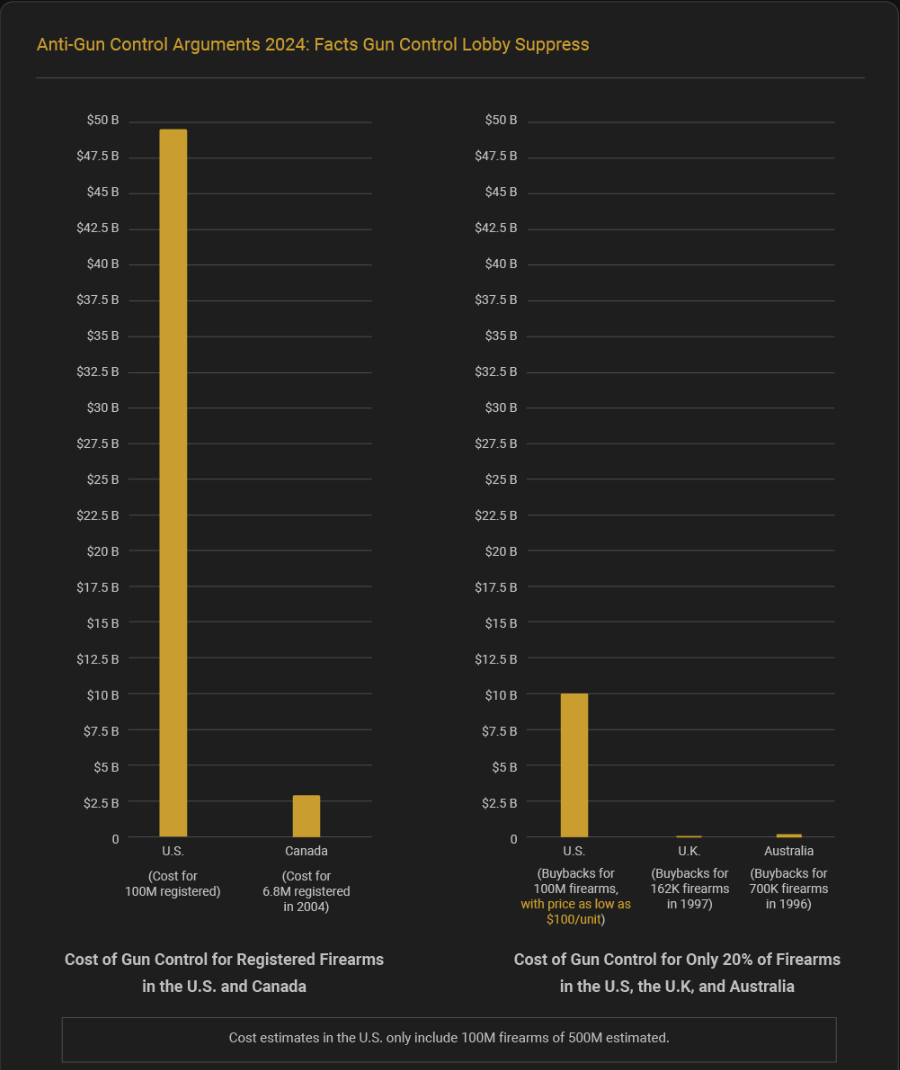
The Economic Benefits of the Second Amendment
The firearm industry generates about $9 billion annually, providing significant economic benefits, including jobs and tax revenue. Without this industry, the U.S. economy would lose over $90 billion. (Source 5)
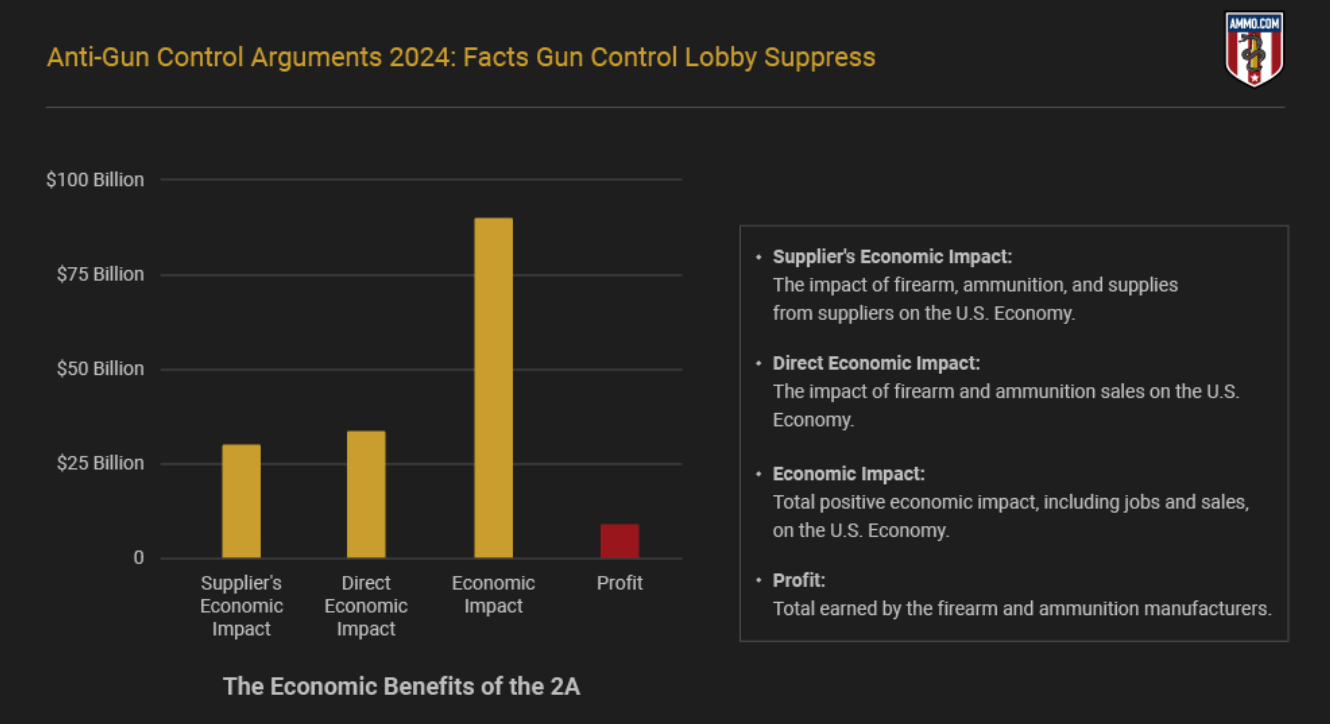
The Effects of Gun Control on Crime and Death Rates
One common misconception when debating gun control is that it has worked in the past, but historical data shows mixed results for the effectiveness of gun control on reducing crime and death rates:
1934 NFA (National Firearms Act): This aimed to reduce homicides by making certain firearms undesirable with a costly tax stamp for ownership, but it took nearly a decade to see significant declines. (Source 6) This was implemented when homicide rates reached 9.7 per 100,000 during Prohibition and The Great Depression.
1968 Gun Control Act: Crime rates increased until the 1990s.
1986 FOPA (Firearm Owners Protection Act) and 1994 FAWB (Public Safety and Recreational Firearms Use Protection Act):These targeted specific firearms but had limited impact on overall crime rates. (Source 11)
1993 Brady Bill: This required waiting periods for a short time and created a national background check system.
1990 GFSA: School shootings increased significantly after its implementation. (Source 12)
It’s important to note here that criminals often obtain guns from non-legal sources, undermining the effectiveness of gun control laws aimed at legal purchases. (Source 13)
Oppressive Gun Control History
Gun control has often been used as a tool for oppression:
- Prevented Native Americans from bearing arms.
- Disarmed colonies to prevent uprisings.
- Used against enslaved people and minority groups like the Black Panthers.

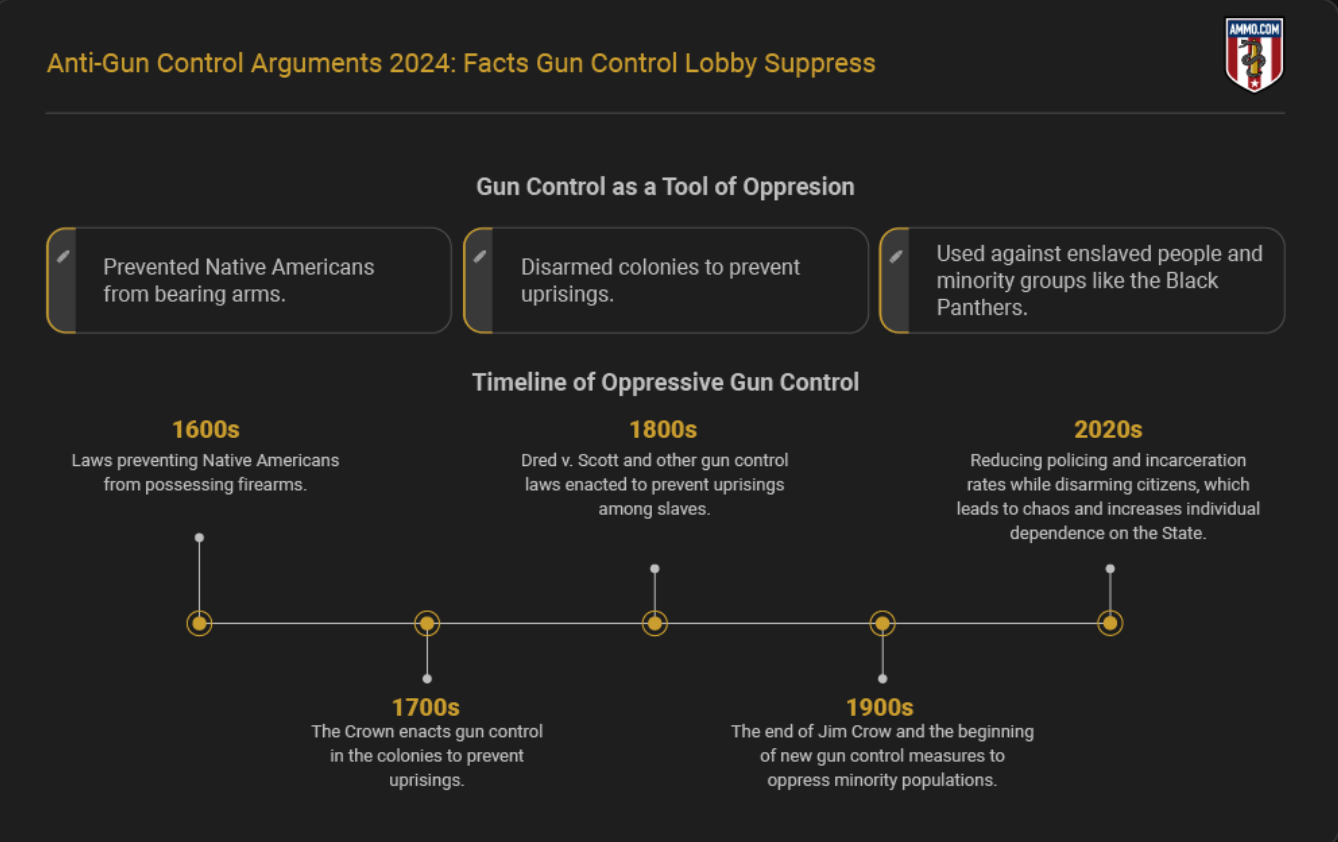
Gun Control in Other Countries
We often hear about how well other countries curbed homicide rates and mass shootings by enacting gun control. However, countries like the U.K. and Australia still have mass killings and homicides (including those with firearms).
Australia: Homicide rates initially increased after strict gun control laws but eventually decreased, saving one person per 100,000.
United Kingdom: Similar trends with initial increases in homicide rates post-legislation, later seeing a reduction of less than one person per 100,000.
Canada: Despite stricter gun laws, recent homicide rates are higher than before licensing requirements. (Sources 17, 18)
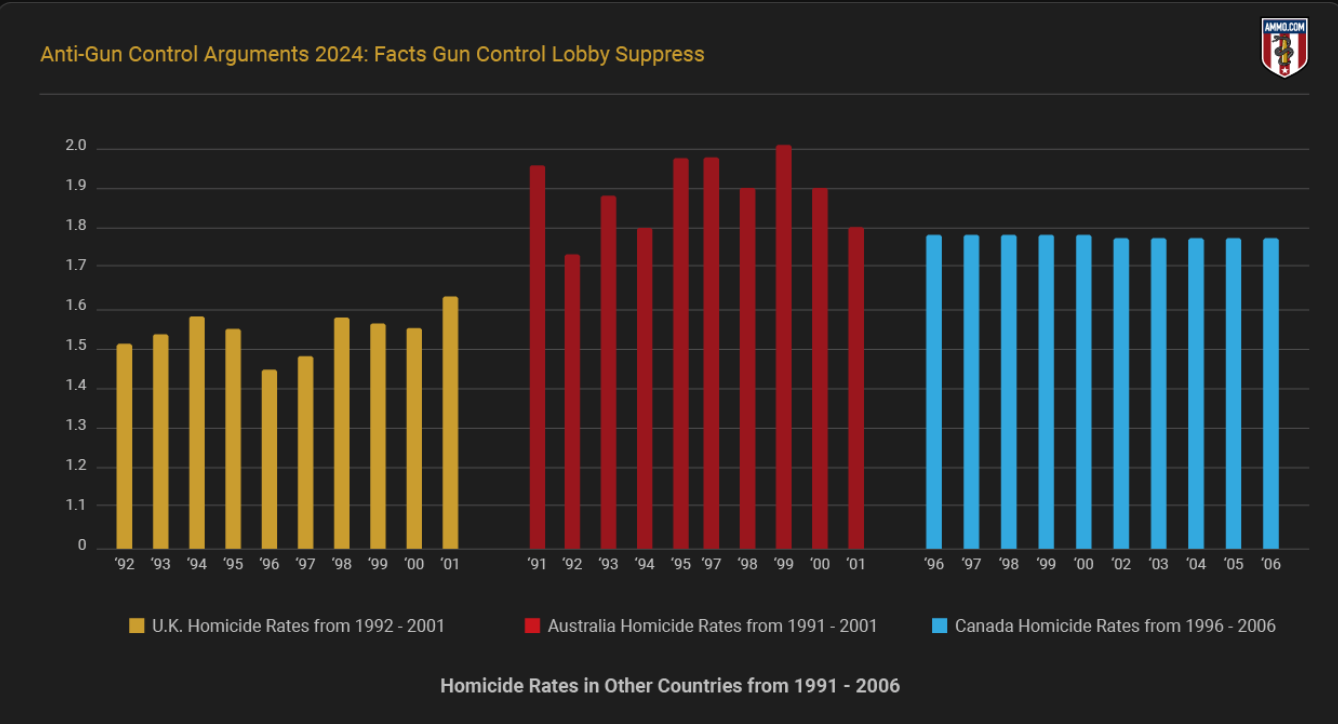
The Original Intent of the Second Amendment
The Second Amendment states: “A well-regulated militia, being necessary to a free state, the right of the people to keep and bear arms shall not be infringed.” Historical documents and Supreme Court rulings support that this right is essential for maintaining liberty and limiting government power over citizens.
Plainly put, some Americans place credence on the first part of the sentence, and others only on the second part. However, after reading several founding documents, letters, and Supreme Court cases, it’s obvious: the first statement explains why the 2A is necessary, and the second limits the government’s power over the right to keep and bear arms.
Supreme Court Cases
The Supreme Court consistently upholds that U.S. citizens have the right to keep and bear arms. However, the Second Amendment does not apply to all firearms and all individuals.
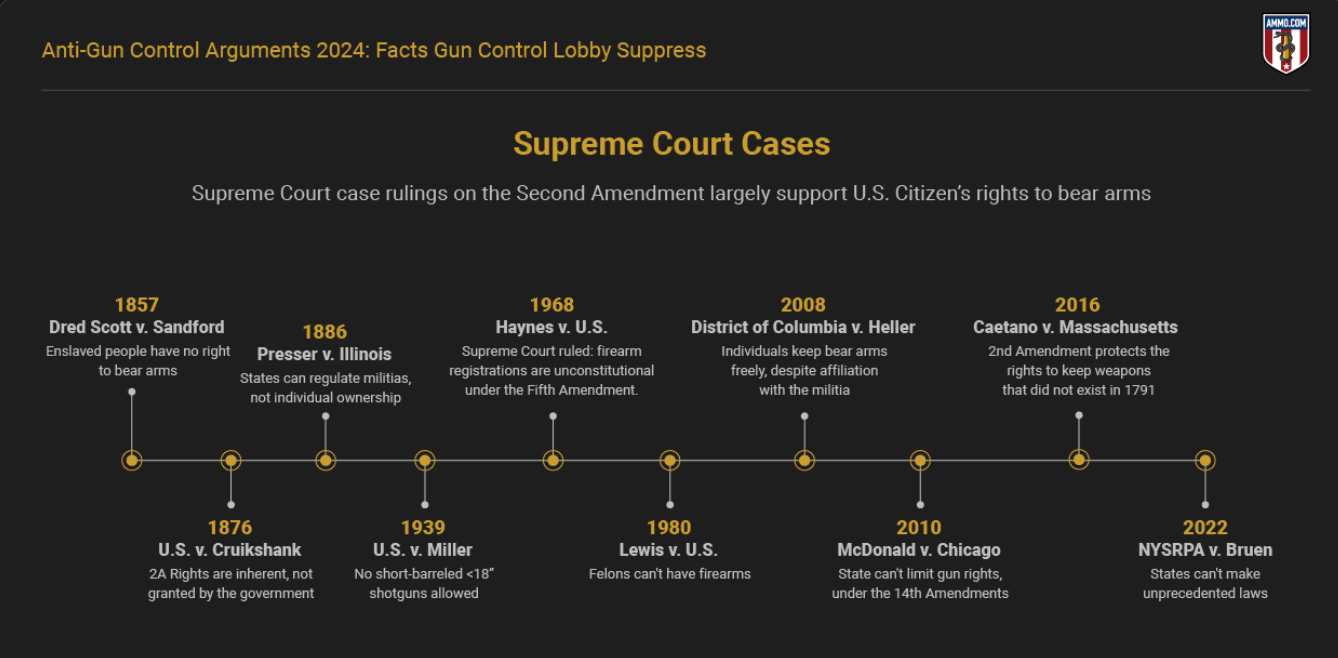
Exploring a Well-Regulated Militia
Rather than arguing semantics or sentence structure, let’s review a few founding documents written before the Constitutional Convention.
John Hancock’s Boston Massacre Oration 1774
In John Hancock’s speech on the anniversary of the Boston Massacre, we see that the well-regulated militia is comprised of the citizens of states and not controlled by the government.
George Washington to John Hancock 1776
George Washington expressed to John Hancock that an unregulated and undisciplined militia would not adequately protect the colonies from foreign threats.
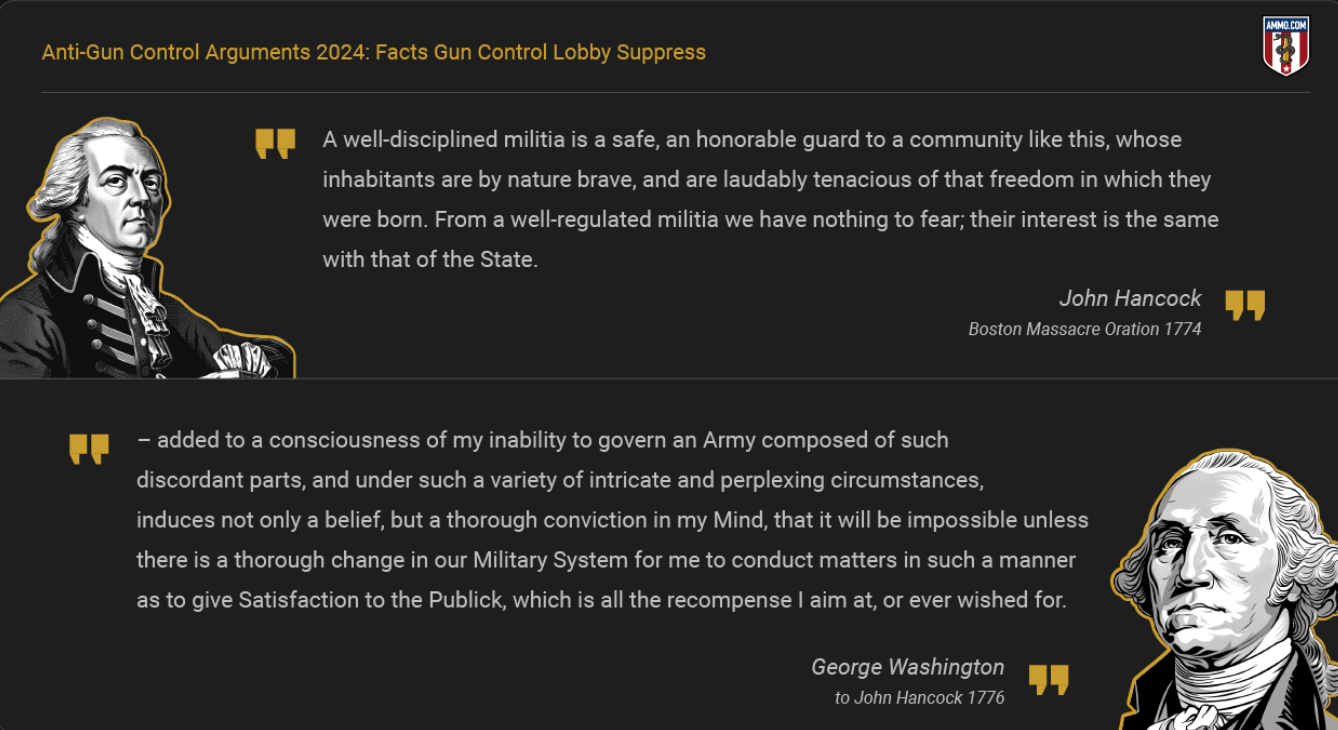
Exploring the Right of the People
James Madison – Federalist Paper #46
James Madison wrote Federalist Paper #46 in 1788. One of his many contributions to the Constitutional Convention (and, ultimately the Constitution) was that the right of the people to keep and bear arms would greatly benefit the States’ liberty.
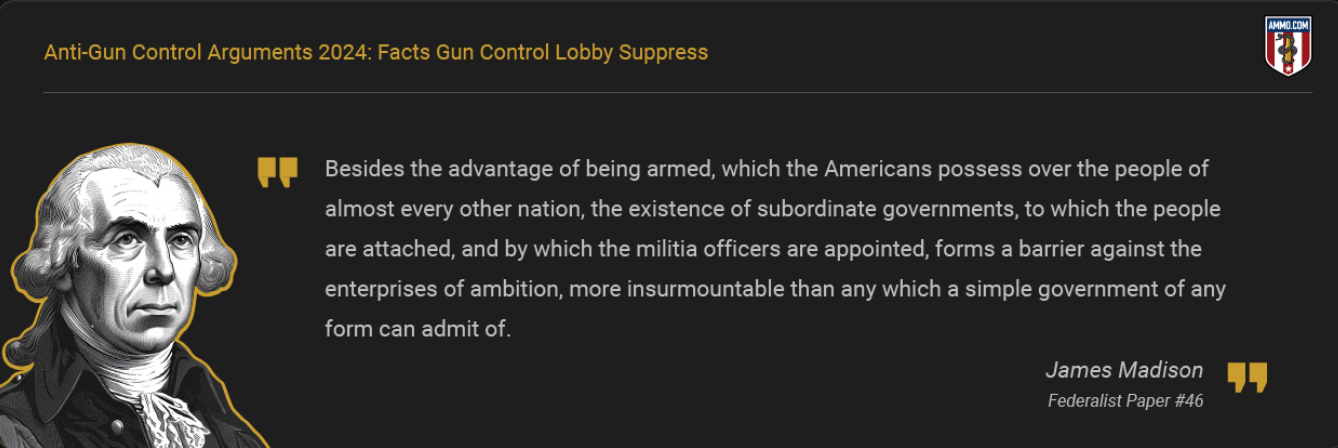
When we put these pieces together, we can see the founders’ intent: that a well-regulated militia would be necessary to maintain a free state and that, therefore, the right of the people to keep and bear arms shall not be infringed.
Ethical Arguments Against Gun Control
Gun control is a longstanding debate. While intended to reduce crime, evidence suggests that it often fails to achieve its goals. The United States, with decades of gun control legislation, still sees high crime rates. Effective self-defense and protection of liberty are central arguments for maintaining Second Amendment rights.
There is no correlation between firearm-related deaths (including homicide, suicide, unintentional, and law enforcement) and gun lobbying (for or against gun control).
Essentially, feel-good legislation is ineffective but quite profitable.
We Rest Our Case
Gun control is not a new concept and has been debated for centuries. Many arguments for gun control are based on a desire to reduce crime rates, but crime is complex and multifaceted.
Historical and current evidence suggests that governments are often unable to protect civilians as effectively as individuals can protect themselves. Thus, maintaining the right to keep and bear arms is seen by supporters as crucial for personal safety and liberty.
Sources:
- Gun Registry Cost Soars to $2 Billion
- How Australia and Britain Tackled Gun Violence
- Estimated Number of Firearms in Canada
- Calculate the Economic Cost of Gun Violence
- Firearm and Ammunition Economic Impact
- Homicide Trends in the U.S. 1900-1974
- Gun Control and Racism: The Laws and Taxes Meant to Limit Minority Gun Ownership in America
- Canada Firearms Program Statistics: 2004
- Gun Lobby Donations
- CDC Wonder (Provisional, 2018-2022, 1999-2020, 1968-2016)
- Guns Used in Crime
- Shooting Incidents at K-12 Schools (1970-2022)
- Source and Use of Firearms Used in Crimes: Survey of Prison Inmates in 2016
- Official Statistics: Historical Crime Data
- Australia Murder/Homicide Rate: 1960-2024
- U.K. Murder/Homicide Rate: 1960-2024
- History of Firearms in Canada
- Number, Rate, and Percentage Changes in Canada’s Homicide Victims
LegalReader thanks our friends at Ammo.com for permission to share this piece. The original is found here.


Join the conversation!